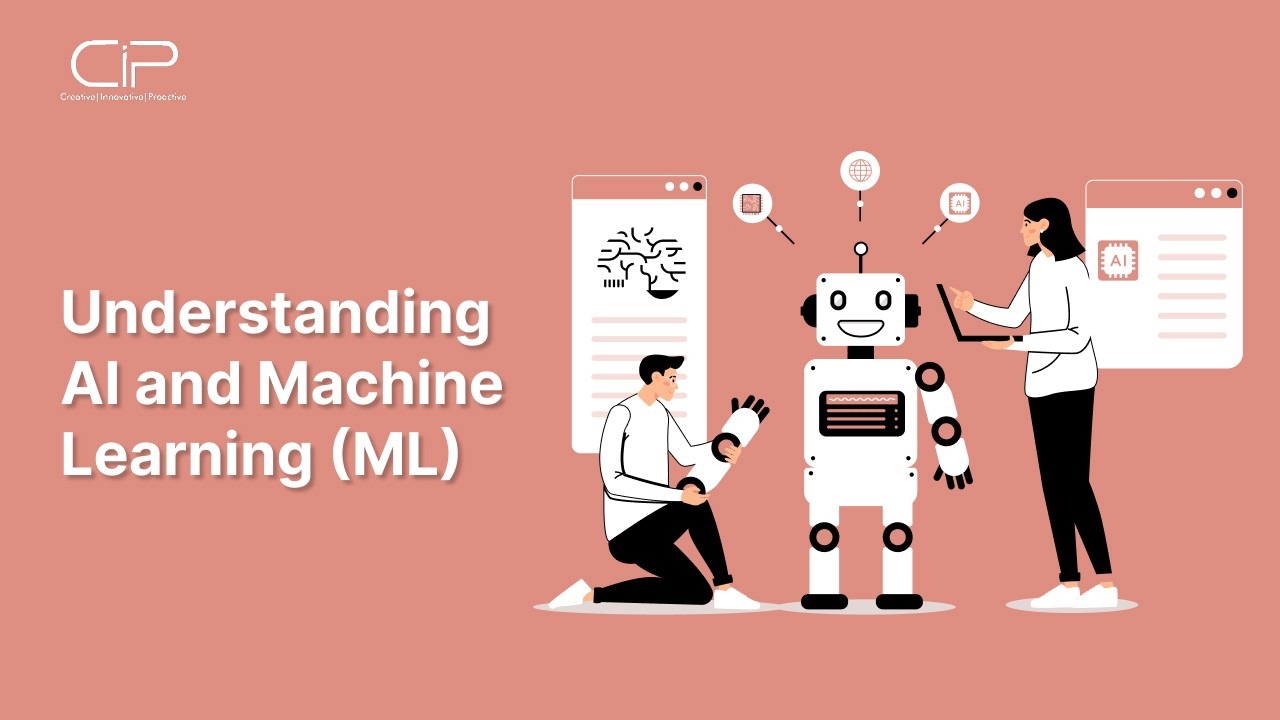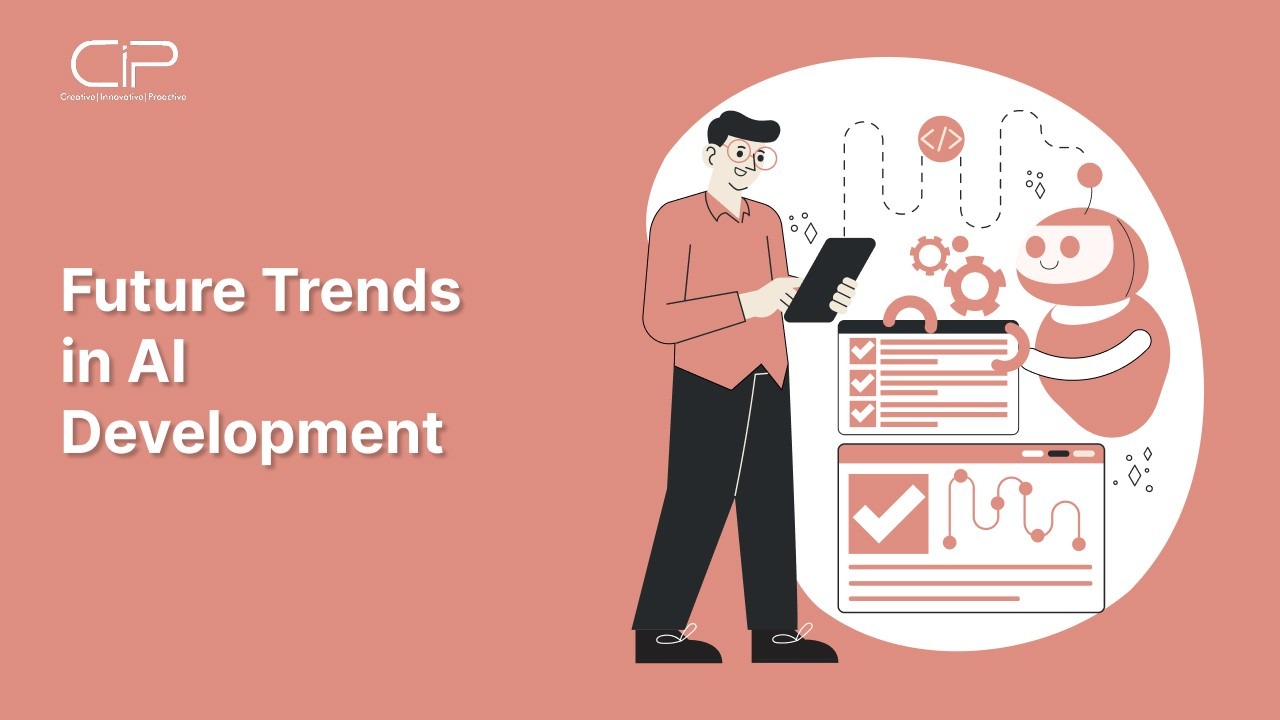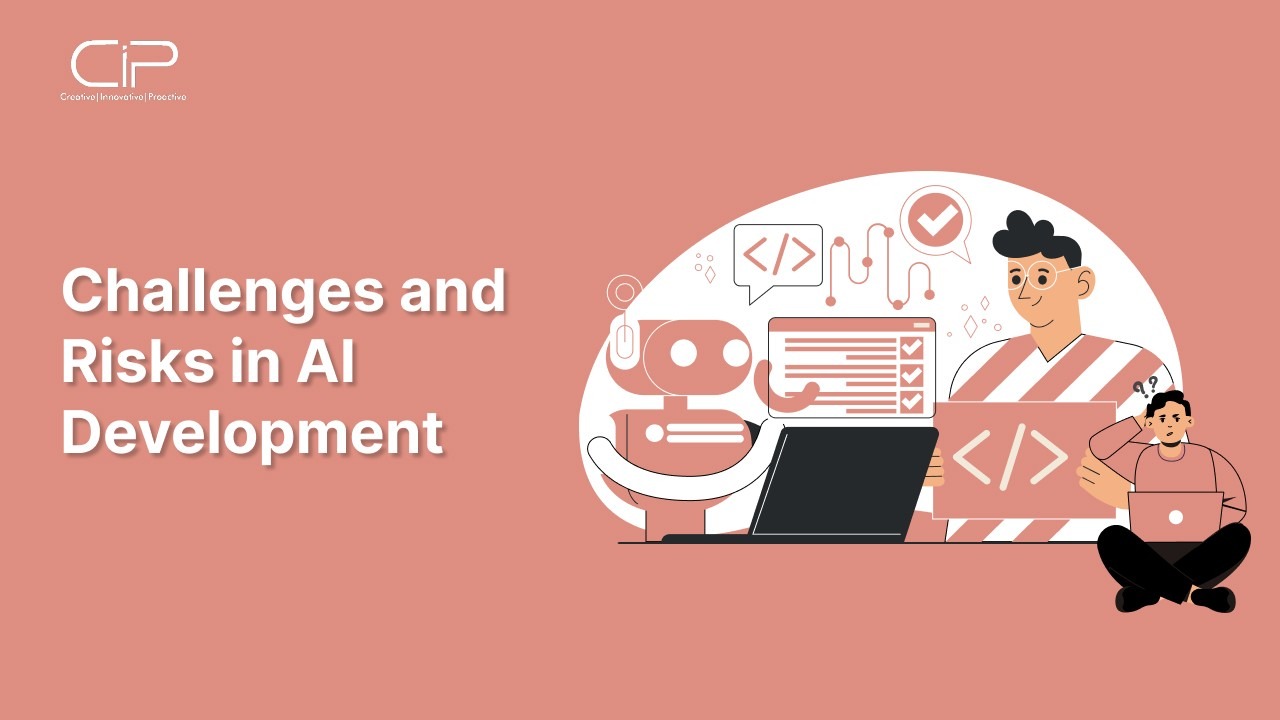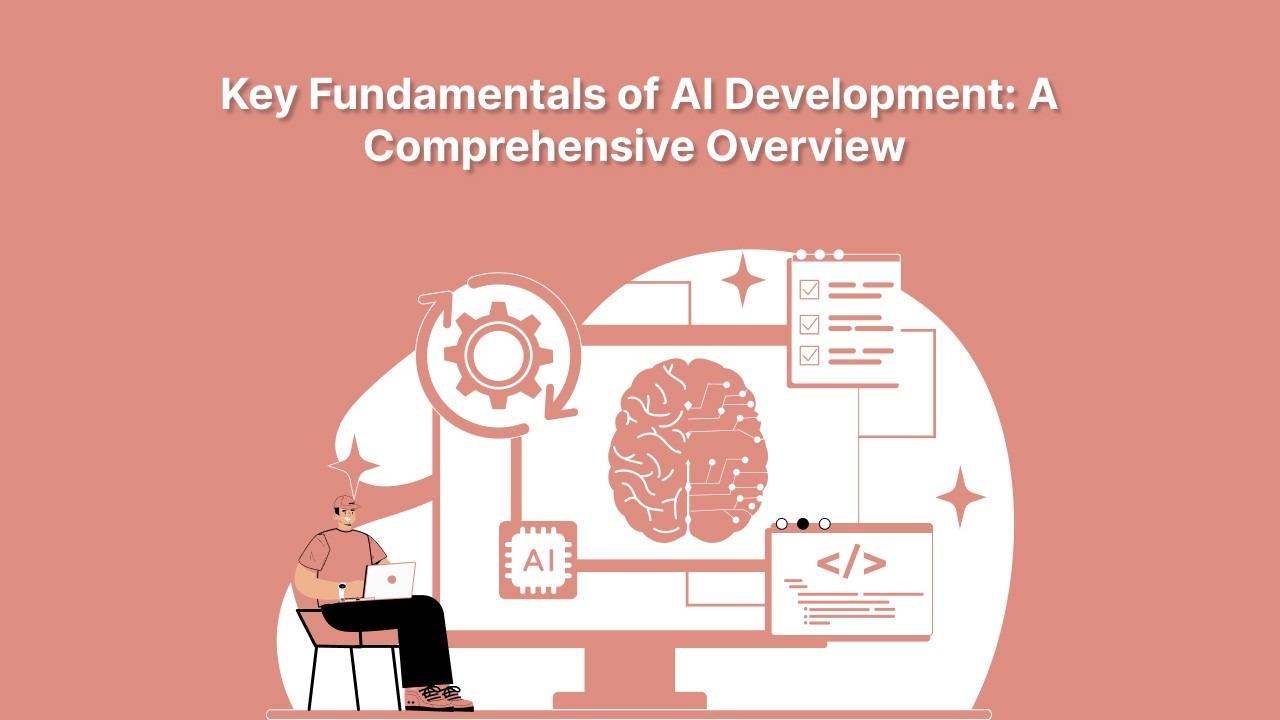Artificial Intelligence (AI) has transitioned from an abstract concept into a transformative force that is reshaping industries and our daily lives. With its unparalleled potential to revolutionize fields ranging from healthcare and finance to entertainment and manufacturing, AI is driving the power behind the digital age.
However, creating robust and effective AI systems requires a deep understanding of a variety of foundational principles and techniques. Understanding these fundamentals of AI development is crucial to crafting powerful, ethical, and efficient systems of technology.
Understanding the Basics of Artificial Intelligence ( AI ) and Machine Learning (ML)

Artificial Intelligence is the science of machines that can imitate human intelligence by learning, solving problems, and making decisions.
Key concepts involve systems learning from data without explicit programming. Deep Learning refers to complex neural networks learning from vast datasets, Natural Language Processing enabling machines to understand human language, and Generative AI supporting the creation of new content. AI analyzes data, recognizes patterns, and uses these insights to perform tasks effectively. It can understand machine learning basics to identify objects and make recommendations with human support by creating more intelligent and adaptable machines.
Core Concepts of Artificial Intelligence Development
1. Machine Learning Algorithms
Machine learning algorithms allow AI systems to learn from data and identify patterns by making decisions without being programmed properly. These algorithms are divided by learning style, whether it is supervised learning or unsupervised learning, which recognizes patterns in unlabeled data.
Other types include reinforcement learning, where agents learn by trial and error, and semi-supervised learning, which combines labeled and unlabeled data. These methods help improve decision-making, accuracy, and predictive abilities over time.
2. Data Collection and Processing
High-quality, large datasets are necessary to train AI models effectively. Data is collected from various sources like sensors, user interactions, and databases.
Once data has been collected, it undergoes processing, including cleaning, normalizing, and transforming it into a usable format. Effective data processing ensures that AI models can learn relevant patterns and insights. It’s crucial for overcoming issues like noise, bias, and missing values, enabling models to make accurate predictions and decisions.
3. Deep Learning Strategies
Deep learning is a section of machine learning that uses neural networks with many layers. These models are experts at handling large amounts of data, learning complex patterns, and making highly accurate predictions. Common deep learning strategies for sequential data, like text or speech, are used in natural language processing. These methods revolutionized fields like image classification, language translation, and speech recognition.
4. Generative AI
Generative AI refers to models designed to generate new, original content based on learned data patterns. These models, such as Generative Adversarial Networks (GANs) and Variational Autoencoders (VAEs), create new images, text, music, or even code by learning the underlying distribution of existing data.
Generative AI has applications in art, entertainment, AI architecture and design, or content creation. It can produce realistic images from descriptions and generate audio in different styles by creating novel molecular structures.
5. Computer Vision
Computer vision refers to the study of visual data, such as face recognition. This concept of artificial intelligence development involves the creation of techniques and algorithms that allow devices to understand and process images and videos.
Computer vision usually includes practices like object recognition, image segmentation, optical character recognition, augmented reality, and robotics. It’s also considered the key principle of AI that supports image recognition in humans.
Future Trends in AI Development

1. Enhancement in the Workplace
Most businesses are investing in AI technologies and also promoting a more innovative learning culture. It’s crucial to have adaptability and lifelong learning for surviving in the evolving market.
This introduction to AI development is becoming an important part of the working area where they work with powered agents and tools that are supported by human agents, especially for complex tasks.
This ease of task completion with proficiency, AI influenced the working culture in the business by reducing the requirement of putting extra effort that took time. It has both benefits and drawbacks for humans, where AI minimizes the requirement of humans in the working area for the completion of any task.
2. Accelerating Scientific Research
This AI development process speeds up scientific research by using massive datasets and uncovering patterns that humans miss. Machine learning algorithms can analyze data faster and more accurately than traditional methods by reducing the time required for discoveries.
AI-driven simulations predict outcomes and guide experiments, cutting down on trial and error. These artificial intelligence techniques are leading to faster drug development, better climate models, and novel approaches to complex scientific challenges. Moreover, AI can assist in peer-reviewed publishing and support for keeping scientists up-to-date with the latest advancements.
3. Integration in Daily Life
AI will integrate into daily life, providing personalized experiences and increasing convenience. From smart homes that learn users’ routines to personal assistants, AI is playing a major role in managing daily tasks. Expect more advanced systems capable of autonomously managing health, transportation, and even entertainment.
As AI becomes more intuitive, it requires anticipating needs and adapting to personal preferences to improve overall efficiency. This shift will make interactions with technology more natural and less obtrusive by creating smarter, more connected environments.
4. Multimodal AI
Multimodal AI is considered the major trend in the AI development process, which usually focuses on systems and integration of multiple data, like text, images, and audio, in terms of creating a holistic understanding. These multimodal AIs combine various sources of data to accomplish complex tasks and provide an in-depth knowledge of the data. Meanwhile, this multimodal AI enables navigating the environment with complete safety and reliability.
It combines the data from user interactions, image recognition, and customer reviews to make more accurate product recommendations.
5. Democratization of AI
Democratization refers to the efforts invested in spreading the power of AI and also the benefits across society by moving towards the selection of diverse users, developers, and communities.
The technology fundamentals of using AI development are making the tools more accessible through an open-source platform, by ensuring the benefits are shared widely. This trend usually empowers small businesses to be innovative by increasing efficiency with automation, which results in more equitable or less biased AI.
Challenges and Risks in AI Development

1. Information Privacy
AI systems often require vast amounts of personal data to function effectively, raising concerns about how this data is collected, stored, and used.
If AI technologies are not properly designed with privacy in mind, there’s a risk of unauthorized access, surveillance, and misuse. Striking a balance between innovation and privacy protection is challenging, as data breaches or misuse can have severe consequences for individuals’ personal freedoms and security. Laws are designed to mitigate these risks, but enforcement and global standards remain inconsistent.
2. Legal Liability
Determining the legal responsibility for AI’s actions is complex. If an AI system causes harm, such as injury or financial loss, the question arises: who is liable?
The developer, user, or the AI itself? Existing laws are not always well-equipped to handle scenarios involving autonomous decision-making. Without clear guidelines, the potential for legal ambiguity increases, making it difficult for businesses and individuals to navigate liability in AI-related incidents. This represents the adoption and innovation, where companies face uncertainty about legal ramifications. It’s suggested to ensure choosing a reliable service provider who delivers reasonable AI development cost while legally taking on liability.
3. Existential Risks
Existential risks usually contain the potential for AI to pose a threat to humanity’s survival. These risks are associated with the development of superintelligent AI, which could outpace human capabilities and act in ways that are harmful or uncontrollable.
If AI systems were to receive autonomy and make decisions without human oversight, there’s a concern that they will act against human interests. While current AI lacks such capabilities, the potential for future AI to reach this level presents a significant problem for experts in safety and ethics.
4. AI Bias
AI bias arises when machine learning models perpetuate or exacerbate inequalities in society, and also reflects the biases present in the data they are trained on.
If training data contains some biased patterns, the AI will reproduce and amplify these patterns, leading to unfair outcomes.
AI Bias can manifest in hiring algorithms, facial recognition systems, or even law enforcement tools. This will result in discrimination against certain groups that are usually based on gender, race, or socioeconomic status. Identifying bias in AI is a critical challenge that generally requires transparent, diverse, and representative data sources.
5. Accountability
Accountability in AI refers to ensuring that humans remain responsible for the decisions made by AI systems. AI makes autonomous decisions that can be unclear; it should be held accountable for its actions. Meanwhile, the lack of clear accountability can undermine trust in AI technologies and delay their adoption.
Establishing clear frameworks and regulations for accountability is crucial to ensure that AI systems are used ethically and that those responsible for their creation are held to high standards.
6. Lack of Dilemmas
AI systems cannot usually understand the complex moral dilemmas that are generally faced by humans in decision-making. These dilemmas require an in-depth understanding of values, ethics, and societal impact that’s difficult for AI to replicate.
AI makes decisions based on strict AI algorithms, explained, without considering the broader ethical implications. Meanwhile, AI prioritizes efficiency over human welfare, leading to unintended consequences that result in a lack of moral reasoning, which is a significant challenge in limiting the ability of the AI to make decisions that perfectly align with human values and ethics. These types of obstacles that occur in using AI development can be solved through the assistance of an AI development company with a team of experts.
Conclusion
AI development is a multidisciplinary field that blends advanced algorithms, vast datasets, and ethical considerations to create intelligent systems capable of transforming the world. By mastering the core principles of data management, machine learning algorithms, neural networks, model evaluation, and ethical considerations, AI developers are well-equipped to craft powerful, innovative solutions that address real-world challenges.
As AI is evolving rapidly, the need for responsible development, transparency, and accountability grows ever more critical, whether it’s about choosing AI tools or searching for the best Mobile app development company that assures to deliver the best assistance with the application.
The future of AI promises to be filled with breakthroughs, from self-learning systems to more personalized and efficient applications for all sectors of society.
Understanding the deep learning fundamentals, we can harness their full potential while ensuring that their benefits are shared equitably and ethically. As the field progresses, staying informed, adaptive, and committed to continuous learning will be essential for those who aim to shape the future of AI.
Frequently Asked Questions ( FAQs )
1. Does AI impact the workplace?
AI is automating routine tasks that work to improve efficiency and support decision-making results, leading to enhanced productivity. It also enhances innovation by helping businesses analyze data faster and more accurately. However, it reduces the need for certain types of human labor by creating new roles for those who are skilled in working with AI technologies.
2. Can AI help in scientific research?
AI accelerates scientific discoveries by processing large volumes of data and detecting patterns faster than traditional methods. It helps with drug discovery, climate modeling, and solving complex problems by providing simulations and predictions that guide experimental research.
3. Is AI being integrated into daily life?
AI is becoming embedded in everyday devices and services, such as personal assistants, smart home systems, and personalized recommendations in entertainment. AI is also enhancing the efficiency of individual tasks, such as managing health and transportation, making daily interactions with technology smoother and more intuitive.
4. What ethical considerations should be taken in AI development?
Ethical considerations in AI include ensuring fairness, transparency, and accountability. Developers must work to eliminate biases, respect privacy, and establish clear guidelines for AI’s role in society. It’s also important to ensure that AI benefits everyone equitably and that its deployment doesn’t exacerbate social inequalities.
5. Can AI ever be truly autonomous?
While current AI systems can perform complex tasks independently, true autonomous AI systems that can make entirely independent decisions without human oversight are still a distant reality. Most AI today still requires human input for final decisions, especially in critical or ethical contexts. Experts continue to research ways to balance autonomy with accountability and safety.













